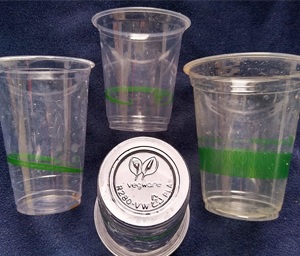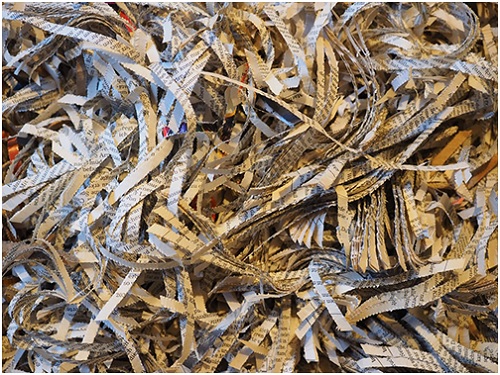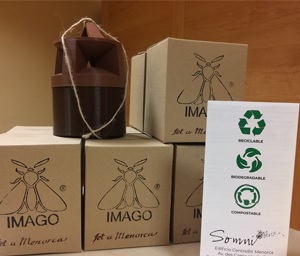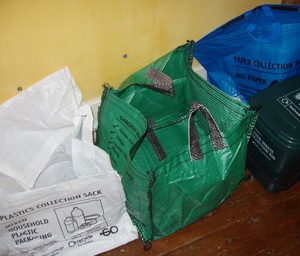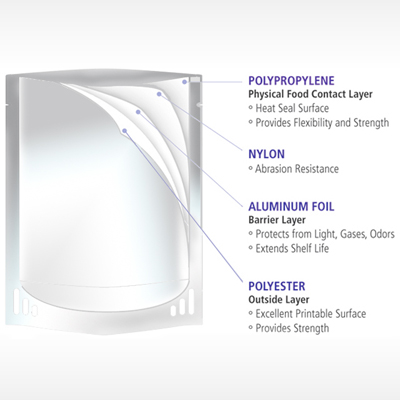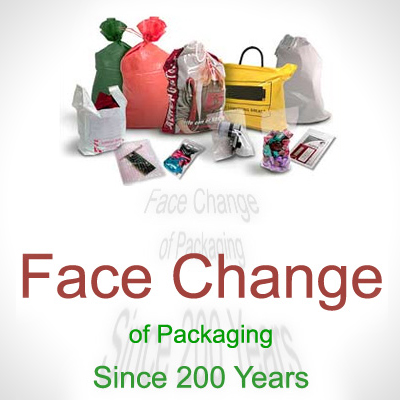Innovative Packaging Materials: The Future of Sustainable Solutions

Introduction:
In today's dynamic landscape, the pursuit of sustainable development goals has become an imperative, especially within sectors like packaging that wield significant influence on environmental stewardship. The escalating emphasis on biodegradability and recyclable materials reflects a collective realization of the urgent necessity to address challenges such as hazardous waste disposal and to foster durable development paradigms. The Millennium Declaration goals serve as guiding beacons, illuminating the path towards a greener future by advocating for the widespread adoption of biodegradable plastics, degradable polymers, and compostable packaging as pivotal strategies to mitigate the adverse impacts of industrial activities on our planet's ecosystems.
This heightened focus on biodegradability underscores a fundamental shift in packaging paradigms, where the integration of bio-based materials and biodegradable films has gained prominence. These innovations not only align with the core tenets of sustainable development goals but also exemplify a proactive approach towards minimizing the accumulation of waste materials and differentiating between biodegradable and non-biodegradable elements in the production cycle. The imperative to tackle hazardous waste disposal is further accentuated by the imperative of carbon offsets, compelling industries to explore novel avenues such as compostable packaging to mitigate environmental harm and pave the way for a more resilient and durable development trajectory.
Sustainable Development Goals and Packaging
The alignment of the packaging industry with sustainable development goals marks a pivotal shift towards embracing more environmentally conscious practices. This alignment not only steers the industry's trajectory but also shapes its ethos, driving a collective commitment towards biodegradability and recyclable materials. Biodegradable plastics and degradable polymers emerge as key protagonists in this narrative, offering tangible solutions to reduce the impact of waste materials on our ecosystems. Their integration not only addresses immediate concerns like hazardous waste disposal but also contributes to the broader vision of fostering durable development by curbing pollution and promoting responsible consumption habits.
Moreover, the emphasis on compostable packaging and bio-based materials underscores a paradigmatic shift towards sustainable production models. These innovations not only align with the millennium declaration goals but also serve as catalysts for change, inspiring industries to rethink their approach to packaging solutions. The adoption of biodegradable films further accentuates this trend, offering a practical avenue to bridge the gap between biodegradable and non-biodegradable elements, thereby paving the way for a more circular and sustainable economy. Through initiatives like carbon offsets, the packaging industry is poised to not only mitigate its environmental footprint but also actively contribute to global efforts towards achieving sustainable development goals.
Biodegradability: A Key Aspect of Sustainable Packaging
The focus on biodegradability stands as a cornerstone in the quest for sustainable packaging solutions. By prioritizing biodegradable plastics and degradable polymers, the packaging industry addresses pressing concerns surrounding waste materials and their impact on the environment. These materials undergo natural decomposition processes, aligning with sustainable development goals by minimizing the accumulation of non-biodegradable waste in landfills and oceans. This shift towards biodegradability not only promotes responsible waste management practices but also contributes significantly to durable development by reducing pollution and conserving natural resources.
Furthermore, the integration of compostable packaging and bio-based materials amplifies the positive impact of biodegradability in sustainable packaging solutions. Compostable packaging materials break down into organic matter, offering a viable alternative to traditional packaging materials that contribute to hazardous waste disposal challenges. Similarly, bio-based materials derived from renewable sources further support carbon offsets initiatives, aligning with the broader goals outlined in the millennium declaration goals. By emphasizing biodegradability as a key aspect of sustainable packaging, industries pave the way for a greener and more environmentally conscious future while advancing towards achieving global sustainable development goals.
The Role of Biodegradable Plastics in Environmental Conservation
Biodegradable plastics play a crucial role in advancing environmental conservation efforts by offering a sustainable alternative to conventional plastics. Their innate biodegradability aligns seamlessly with global sustainable development goals, emphasizing the need for eco-friendly solutions in various industries, including packaging. These plastics and degradable polymers contribute significantly to carbon offsets initiatives, as their ability to decompose naturally reduces the strain on landfills and supports more effective hazardous waste disposal strategies. This shift towards biodegradable plastics not only mitigates environmental harm but also fosters durable development by promoting responsible consumption practices and reducing the reliance on non-renewable resources.
Moreover, the adoption of biodegradable films and the integration of bio-based materials in packaging further amplify the positive impact of biodegradable plastics on environmental conservation. These materials not only exhibit superior biodegradability but also offer functional and durable alternatives to traditional packaging materials. By prioritizing recyclable materials and compostable packaging, industries align with the core tenets of the millennium declaration goals while addressing critical challenges related to waste materials management. The role of biodegradable plastics in environmental conservation extends beyond waste reduction; it sets a precedent for sustainable practices that promote a healthier planet and a more sustainable future.
Recyclable Materials: Promoting Circular Economy in Packaging
The integration of recyclable materials into packaging heralds a transformative shift towards a circular economy model. This model emphasizes the reuse and repurposing of materials, aligning with global sustainable development goals aimed at fostering responsible production and consumption patterns. By prioritizing recyclable materials in packaging design, industries contribute significantly to waste reduction efforts, mitigating the environmental impact of waste materials accumulation. This approach not only promotes a more sustainable way of resource utilization but also supports durable development by minimizing resource depletion and promoting efficient material usage throughout the product lifecycle.
Furthermore, the adoption of recyclable materials in packaging underscores a commitment to addressing key challenges outlined in the millennium declaration goals. These goals advocate for sustainable practices that promote environmental stewardship and reduce the strain on natural resources. Through the integration of recyclable materials and the promotion of a circular economy mindset, industries pave the way for a more resilient and eco-conscious future. This holistic approach not only supports effective hazardous waste disposal strategies but also contributes to carbon offsets initiatives, creating a positive ripple effect towards achieving global sustainability objectives.
Compostable Packaging: Enhancing Sustainable Waste Management
Compostable packaging represents a significant advancement in sustainable waste management practices by offering a solution that breaks down into organic matter. This aligns seamlessly with global sustainable development goals focused on responsible land use and ecosystem preservation. The ability of compostable packaging to decompose naturally underscores its role in reducing the reliance on non-biodegradable materials, thereby contributing to a more sustainable and eco-friendly approach to waste management. This innovative solution not only addresses immediate concerns about waste materials but also supports the broader vision of durable development by promoting responsible consumption patterns and minimizing environmental impact.
Furthermore, the adoption of compostable packaging is a proactive step towards meeting the objectives outlined in the millennium declaration goals. These goals emphasize the importance of sustainable practices that promote environmental sustainability and reduce the strain on natural resources. By integrating compostable packaging into waste management strategies, industries align with these global objectives while also contributing to effective hazardous waste disposal strategies. This holistic approach not only supports the transition towards a circular economy but also aligns with carbon offsets initiatives, highlighting the pivotal role of compostable packaging in enhancing sustainable waste management practices for a greener and more resilient future.
Bio-Based Materials: Eco-Friendly Alternatives for Packaging
Bio-based materials represent a significant stride towards eco-friendly alternatives in packaging, offering a sustainable solution that reduces reliance on fossil fuels. This transition aligns with global sustainable development goals focused on promoting clean energy and sustainable industries. The adoption of bio-based materials not only supports durable development by minimizing environmental impact but also fosters responsible consumption patterns, thus contributing to the overall vision of a greener and more sustainable future. These materials play a crucial role in reducing the environmental footprint of packaging materials, as their production processes often generate fewer greenhouse gas emissions compared to traditional materials.
Moreover, the integration of bio-based materials into packaging design serves as a proactive step towards meeting the objectives outlined in the millennium declaration goals. These goals emphasize the importance of sustainable practices that promote environmental sustainability and reduce the strain on natural resources. By prioritizing bio-based materials in packaging solutions, industries align with these global objectives while also contributing to effective hazardous waste disposal strategies. This holistic approach not only supports the transition towards a circular economy but also complements carbon offsets initiatives, highlighting the crucial role of bio-based materials in driving sustainable innovation and fostering a more resilient and eco-conscious packaging industry.
Differentiating Between Biodegradable and Non-Biodegradable Materials
Understanding the distinction between biodegradable and non-biodegradable materials is paramount in devising effective waste management strategies. Biodegradable materials, such as biodegradable plastics and degradable polymers, possess the inherent capability to decompose naturally, significantly reducing their environmental impact. This differentiation is crucial in promoting sustainable practices aligned with global sustainable development goals. By prioritizing biodegradable options in packaging and other industries, the burden on landfills and oceans is lessened, contributing to the broader vision of durable development and responsible resource utilization.
Conversely, non-biodegradable materials pose a significant challenge in waste management, as their decomposition rates are much slower, if at all. This underscores the importance of transitioning towards biodegradable alternatives to reduce environmental harm and support carbon offsets initiatives. The promotion of biodegradable materials not only aligns with the objectives of the millennium declaration goals but also fosters innovation in sustainable packaging solutions. By educating stakeholders and consumers about the benefits of biodegradability, industries can catalyze positive change towards a more sustainable and eco-friendly approach to waste management.
Impact of Biodegradable Films on Sustainable Practices
Biodegradable films represent a pivotal advancement in sustainable packaging practices, offering a blend of durability and eco-friendliness by naturally decomposing over time. This inherent biodegradability aligns seamlessly with global sustainable development goals, emphasizing the importance of responsible production and consumption patterns. The adoption of biodegradable films not only reduces the environmental impact of packaging materials but also promotes a more sustainable approach to waste management, contributing to the broader vision of durable development and resource conservation.
Furthermore, the impact of biodegradable films extends beyond environmental considerations, influencing responsible production practices and fostering innovation in packaging solutions. By prioritizing biodegradable plastics and degradable polymers in film production, industries align with the objectives outlined in the millennium declaration goals, which advocate for sustainable practices that promote environmental sustainability and reduce the strain on natural resources. The integration of biodegradable films into packaging not only supports effective hazardous waste disposal strategies but also complements carbon offsets initiatives, highlighting their role as catalysts for positive change towards a more sustainable and eco-conscious future.
Carbon Offsets and Their Role in Environmental Sustainability
Carbon offsets initiatives play a crucial role in achieving environmental sustainability by balancing the carbon emissions generated from various activities. These initiatives involve investing in sustainable practices that reduce or offset the carbon footprint, aligning with global sustainable development goals focused on mitigating climate change and preserving natural resources. The integration of biodegradable and recyclable materials in industries such as packaging supports carbon offsets initiatives by reducing the overall environmental impact of production and consumption. This strategic integration not only contributes to durable development but also fosters responsible waste management practices, thus promoting a more sustainable and eco-friendly approach to resource utilization.
Moreover, the role of carbon offsets extends beyond environmental considerations to encompass broader objectives outlined in the millennium declaration goals. These goals emphasize the importance of sustainable practices that promote environmental stewardship and reduce the strain on natural ecosystems. By integrating biodegradable plastics, degradable polymers, and recyclable materials into production processes, industries actively contribute to effective hazardous waste disposal strategies, further supporting the overarching goals of environmental sustainability. This holistic approach not only aligns with carbon offsets initiatives but also serves as a catalyst for positive change towards a greener and more resilient future.
Addressing Hazardous Waste Disposal through Sustainable Packaging
The adoption of sustainable packaging solutions is a proactive measure in addressing concerns surrounding hazardous waste disposal. By prioritizing biodegradable and recyclable materials in packaging design and production, industries mitigate environmental risks associated with the disposal of non-biodegradable and hazardous materials. This strategic shift aligns with global sustainable development goals, emphasizing the need for responsible production and consumption patterns to reduce the environmental impact of industrial activities. The integration of compostable packaging and bio-based materials further enhances these efforts, offering alternatives that break down naturally and minimize the accumulation of harmful waste materials.
Moreover, sustainable packaging practices contribute to durable development by promoting resource conservation and efficient waste management strategies. The emphasis on biodegradability and recyclability not only reduces the strain on landfills and oceans but also supports the overarching objectives outlined in the millennium declaration goals. These goals advocate for sustainable practices that prioritize environmental stewardship and the preservation of natural ecosystems. By addressing hazardous waste disposal through sustainable packaging solutions, industries play a vital role in promoting a more sustainable future, where responsible consumption and production practices are integral to environmental sustainability.
Conclusion: Embracing Innovation for a Sustainable Packaging Future
In conclusion, the journey towards a sustainable packaging future hinges upon the adoption of innovative materials that align with global sustainable development goals. Embracing biodegradable plastics, recyclable materials, and compostable packaging represents a pivotal step towards achieving durable development and promoting responsible production and consumption practices. These materials not only address immediate concerns about waste materials and hazardous waste disposal but also contribute to broader environmental sustainability objectives outlined in the millennium declaration goals.
The integration of bio-based materials and biodegradable films into packaging solutions signifies a shift towards eco-friendly alternatives that prioritize biodegradability and recyclability. This strategic approach not only reduces the environmental impact of packaging materials but also supports initiatives such as carbon offsets, fostering a more resilient and sustainable packaging industry. By embracing innovation in packaging materials, industries pave the way for a greener future where sustainable practices are at the forefront of business operations, ensuring a harmonious balance between economic growth and environmental stewardship.



